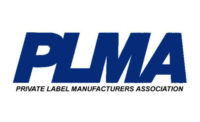Fresh is no longer just a descriptive term dropped into a starburst and printed on a label. It has become a consumer priority. Shoppers are seeking out fresh foods like never before. The percentage of all in-home eating occasions that include fresh foods is almost back to levels not seen in 30 years, according to recent research by the NPD Group. Thirty years!
How does private label fit in? The Private Label Manufacturers Association (PLMA) recently undertook a first-ever, in-depth study of the impact fresh foods is having on the store brands business. Here are some of the findings:
Traditional supermarkets all over the country are busy adopting fresh-focused strategies. Take Price Chopper, for example. The chain, with stores throughout the Northeast, recently announced it would change its name to Market 32, with large graphics of fresh produce and dairy adorning the logo, and a new emphasis on fresh foods; competing channels in drug, mass and dollar are adding fresh food sections as fast as they can build them in an effort to woo consumers away from supermarkets and into their own stores.
And it’s no coincidence that formats with words like “fresh” and “farmer” in their name—such as The Fresh Market, Fresh Thyme Farmer’s Market and Sprouts Farmers Market—are among the fastest-growing and best-capitalized supermarket chains in the country.
Of course, it doesn’t get any fresher than in the perishable departments—and that’s where shoppers are spending more time these days when they go their favorite food retailers. PLMA’s study of 800 primary household grocery shoppers found they want more fresh options in the deli, dairy and bakery departments. The study concludes that one of the biggest beneficiaries will be store brands. More than half of the respondents stated they already purchase more private label than they did five years ago, and 44 percent said they buy store brands either always or frequently.
The frequency of store brand purchases was even higher in fresh: 47 percent stated they bought private label always or frequently in the deli, dairy and bakery departments. Here’s a breakdown of the top findings for each:
- In the deli, more restaurant-quality and heart-healthy items were among the top requests. Both went hand-in-hand with convenience, noted by four in 10 shoppers polled.
- In dairy, 35 percent of respondents asked for a better assortment in all areas, though 38 percent specified that they would like to see a wider selection of cheeses.
- In bakery, freshness was the clear winner, with 31 percent saying they would like to see more items baked in-store. Health was also top of mind, with 31 percent wishing for more healthful ingredients and less sugar, corn syrup and bad fats.
It’s worth noting that the consumer ideal of “fresh” today is closely tied to the growing interest in health and wellness. Shoppers participating in the survey also want to see better nutrition information and labeling in the deli and prepared meals case.
Retailers developing or reinventing their store brands in these departments have an unprecedented opportunity to make a favorable impression on their shoppers. They can take proactive steps to work with their store brand suppliers to switch out out-of-favor ingredients, make nutrition information transparent and readily available, and then educate shoppers with product sampling and demonstrations, which also ranked high in the survey across all three departments.
The growth of deli, dairy and bakery will be readily apparent at this year’s PLMA Private Label Trade Show, taking place Nov. 15–17 in Chicago, where the theme is “Store Brands and Beyond.” The three departments will be a special highlight of the event. They are among the fastest-growing sections of the show floor and, if there’s one thing that we’ve learned from past shows, it’s that when there’s an influx of exhibitors specific to a category, it usually translates into growth at retail.






